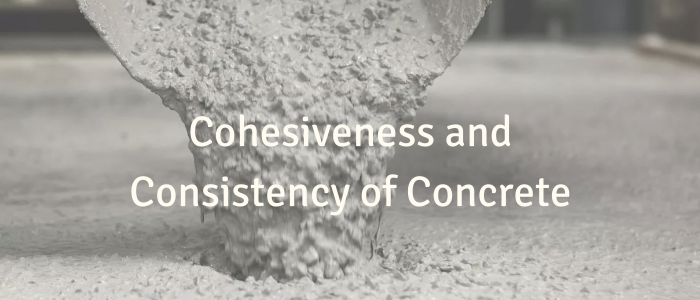Concrete Workability
Concrete Workability is a property of concrete in its fresh state during mixing. It determines the ease with with casting activities are done including mixing, placing, compacting and finishing. Concrete workability is usually identified in the mixture design process according to the type of construction.
Fresh concrete is said to be workable if mixing, placing, compacting and finishing can be done with minimum effort and without concrete ingredients being segregated. In contrast, if concrete has low or poor workability, it will not flow in a smooth way into forms and it will be difficult in mixing, placing, compacting and finishing.
The workability of concrete contains two aspects, consistency and cohesiveness.
Consistency of Concrete
It refers to the aspect of workability that represents the flowing features of concrete in its fresh state. Consistency acts as an indicator for the fluidity properties of a certain concrete mixture. Slump test is the way of measuring the consistency of concrete.
Concrete with high slump value is very fluid while stiff concrete has a low slump value. Best workability is achieved at medium consistency i.e. slump ranges between 75 to 150 mm.
Cohesiveness of Concrete
The other aspect of workability is Cohesiveness. It tells whether a concrete mixture is plastic, harsh or sticky. Concrete is required to be plastic which allows it to be molded and hold a shape when formed.
Harsh mix:
- has low plasticity
- components tend to segregate
- may have very high or very low water content
- may have low cement content
Sticky mix:
- may have a high cement content
- may have large amounts of fine particles (dust, sand …)
- do not separate easily
- needs high amounts of water to get minimal workability
- develop excessive shrinkage cracking
Plastic mix:
- is cohesive
- is not either sticky or harsh
- do not segregate easily
Read Also: CRACKING IN CONCRETE WALLS: CAUSES, TYPES AND MITIGATION
